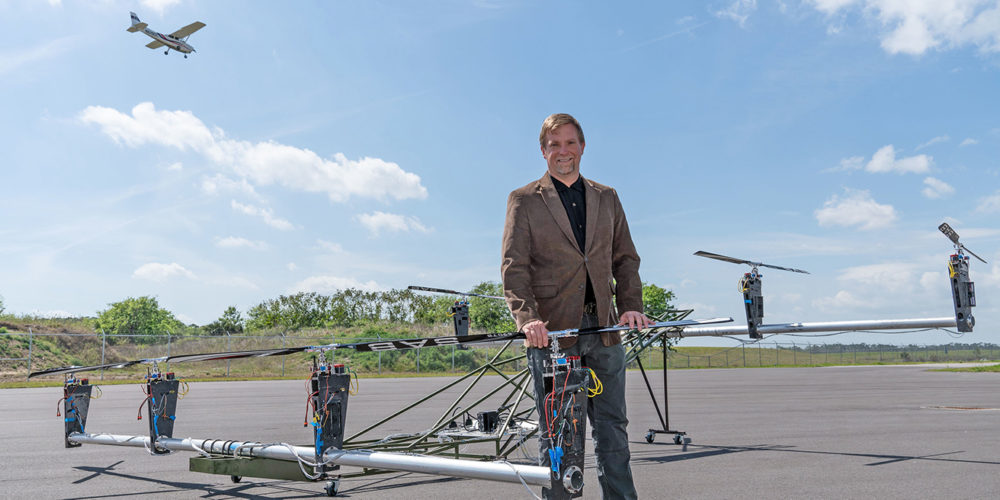Urban air mobility (UAM) innovation and the development of new aircraft propulsion systems are more possible today, thanks to revised Federal Aviation Administration (FAA) standards that went through much of their formative stages at meetings hosted by Embry-Riddle over the past decade.
Driven by Congress’ Small Airplane Revitalization Act of 2013, updating the FAA’s Code of Federal Regulations required overhauling its Part 23 airworthiness standards for general aviation airplanes weighing less than 19,000 pounds with 19 or fewer seats, with an eye toward getting safety-enhancing technologies to the marketplace more quickly. The revised rules — effective August 2017 — give manufacturers leeway to employ what are known as consensus standards to meet airworthiness requirements.
“Embry-Riddle really was one of the cornerstone locations for all of this to begin,” says Greg Bowles (’98), an aerospace engineering graduate now working at Joby Aviation, a UAM startup. Bowles helped organize stakeholders during his time as vice president for global innovation and policy for the General Aviation Manufacturers Association (GAMA).
Professor of Aerospace Engineering Pat Anderson, who Bowles studied under when he was a student, played a vital role in getting the revision effort off the ground. Working with GAMA, Anderson organized meetings and conferences that helped create the consensus the FAA was looking for to drive the revision of Part 23.
“The rules had been outdated for 30 years,” says Anderson, chair of GAMA’s Electric Propulsion Committee. “It was very prescriptive with means of compliance written directly into federal law. It was essentially a guide on how to build an aluminum airplane.”
Building something as unique as a flying taxi or a personal air vehicle and bringing it to market wouldn’t have been possible until the regulation overhaul. Thanks to private industry’s efforts to work hand-in-hand with the FAA, Part 23 went from 277 pages down to 74 pages of rules, and established new means of compliance contained in consensus standards that groups like GAMA helped create.
With Embry-Riddle on the leading edge of UAM and new technologies such as hybrid electric propulsion, helping change outdated standards is key to pioneering future aircraft, Anderson says. “This allows significantly more innovation because you don’t have to change the rules to do something novel.”
